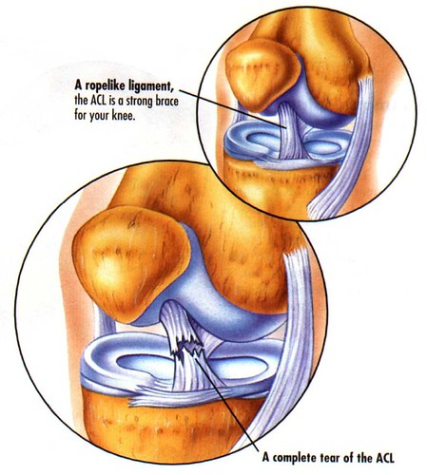Common Injuries in Football by Position
What to watch out for according to your position
December 3, 2021
It isn’t a secret that football has health risks. According to Central Florida Bone & Joint Institution 0.5 percent of High School football players get injured. It’s still worth noting what could happen.
The most iconic position in sports is a quarterback and on the right team a quarterback can be very safe from injury, but there will be times where a defensive lineman or linebacker sacks the quarterback. The most common injury to quarterbacks are shoulder injuries. Former Super Bowl Champion and Super Bowl MVP Drew Brees suffered a torn labrum and partially torn rotator cuff 15 years ago that almost ended his career early.
One of the most exciting parts of quarterbacks is seeing if they are one of two quarterback types. Pro and Dual Threat. A pro style quarterback is a quarterback who has a good arm but can’t run too well so they avoid scrambling. Dual threat quarterbacks have talent with throwing and running the ball. It is normally believed that these dual threat quarterbacks have a higher chance of injury because of how much they run but that’s not the case. Pro style quarterbacks have the highest chance of injury among quarterbacks because they can’t escape the pass rush as well as a dual threat quarterback can.
The University of Pittsburgh Medical Center found running backs are at risk more than anyone else on the field, 16 percent of injuries occurred, higher than any other position. They are at risk of Ankle and Head injuries, mostly sprained ankles and concussions.
Wide Receivers are the second most injured player at 11 percent. Wide Receivers are at risk of Ankle, Knee, and Shoulder injuries. Offensive linemen are at high risk of ankle sprains. linemen can be caught in a bad position and roll their ankles. This is why most cleats used by linemen have a lot of ankle support. Tight ends have both the risks of a wide receiver and offensive lineman, however, they aren’t doing both catching and blocking every play. They have a smaller chance of injury than offensive linemen and Wide Receivers.
Delta High School Freshman offensive and defensive lineman Dylan Fry suffered an ACL and a PCL tear early on in the successful Delta season and wasn’t able to play a game his Freshman year. “I knew that my football career would most likely be over,” said Fry after being asked about his initial thought when he felt that heart-wrenching pop in his knee. His knee had started to swell up to the size of a softball and that was the first indication that something was wrong. The injury happened at North Western for a Football camp during an offensive line drill.

Cedaredge Freshman Cody Stephens suffered leg injuries two years in a row before those seasons even started. “What doesn’t kill you makes you stronger”, said Stephens trying to look at the bright side of both injuries. The first injury came from throwing to himself when he stepped in a prairie dog hole and broke his ankle. That second injury came after he was bucked off a bull. The bull stepped on his leg, breaking it, ending another season before it started. With this in mind players also have to try and stay healthy in the offseason as well as during the season.
On the defensive side of the ball, linebackers suffer about 15 percent of all injuries, all being head, shoulder, and knee injuries. The defensive lineman, particularly the defensive tackles and nose tackles suffered 9 percent of all Football injuries. Shoulder injuries and tearing up the knee were most common but head injuries happen as well. Defensive backs have the same injury risks as a wide receiver except less chance to be injured
Special Teams players are generally pretty safe from injury however they do happen. The long snapper is at the highest risk on special teams at only 4 percent and kickers and punter injuries are even less likely. Kickers and Punters are at risk of mild lower body injuries like a pulled groin or strained hips and quads. However, the chances of other injuries are there but these mostly occur when a team goes for a fake and the kicker or punter gets hit. This happened to the Indianapolis Colts kicker Rodrigo Blakenship on a fake Field Goal attempt where he was hit and injured. This led to the Colts’ signing kicker Matthew Badgley and even after Blakenship recovered Badgley is set to stay as the kicker.
Injuries will occur every year, however, with proper conditioning and stretching, players can lower the chances of injury. The Lincoln Orthopaedic Center claims “Muscle imbalances and joint weaknesses can lead to injuries so strength and conditioning are great for injury prevention.” Bone injuries happen but aren’t very likely. Bones account for about a quarter of all injuries. The most devastating injuries are ACL Tears, PCL Tears, and Achilles Tendon Tears. ACL and PCL Tears end seasons but Achilles Tendon Tears take longer to fully recover from and some players never do. However, these tears are very rare but ACL and PCL Tears are still some of the most common injuries in football.